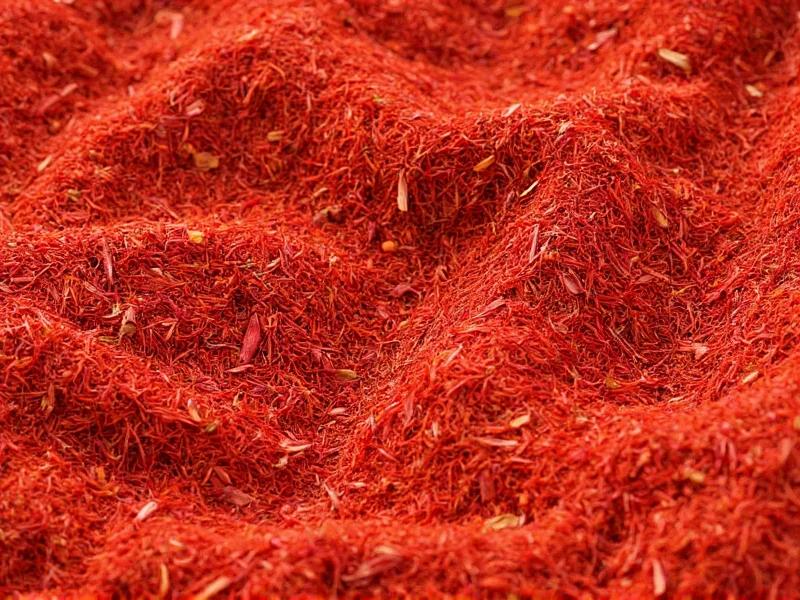Saffron's extraordinary cost stems from its painstaking cultivation requirements. Unlike most spices, saffron consists of the delicate red stigmas harvested by hand from the Crocus sativus flower. Each bloom produces just three threads, and workers must carefully pluck these fragile strands before the flowers wilt in the morning sun. This intensive manual labor, combined with the crop's specific climate requirements and low yield per acre, creates a perfect storm of scarcity that drives saffron's premium pricing.
The Global Saffron Market: Understanding Price Variations
When examining saffron prices, it's essential to recognize the significant differences between retail and wholesale markets, as well as variations based on quality standards. The International Organization for Standardization (ISO) established grading criteria (ISO 3632) that directly impact pricing through measurements of crocin (color), picrocrocin (taste), and safranal (aroma) content.
| Quality Grade | Coloring Strength (min) | Retail Price per Gram | Wholesale Price per Pound |
|---|---|---|---|
| Coupé (Category I) | 220 | $15-$20 | $4,000-$5,000 |
| Mancha (Category II) | 190 | $10-$15 | $3,000-$4,000 |
| Diari (Category III) | 150 | $5-$10 | $1,500-$3,000 |
Key Factors Influencing Current Saffron Pricing
Several critical elements determine why saffron price per gram varies so dramatically across the global marketplace. Understanding these factors helps consumers make informed purchasing decisions and explains regional price differences in saffron cost per ounce.
Geographic Origin and Terroir
Iran produces approximately 90% of the world's saffron, with the Khorasan region yielding the most prized varieties. Spanish saffron (particularly from La Mancha) commands premium prices due to strict quality controls, while Kashmiri saffron fetches higher prices because of its limited production and distinctive characteristics. Each region's unique soil composition, climate, and traditional processing methods create subtle flavor and color variations that affect saffron price comparison across origins.
Harvest Year and Freshness
Saffron's volatile compounds degrade over time, making current saffron market price heavily dependent on harvest year. Premium prices apply to saffron harvested within the past 12-18 months, while older stocks sell at significant discounts. The 2023 harvest saw slightly lower prices due to favorable weather conditions in Iran, but political instability continues to create uncertainty in saffron price trends 2023-2024.
Processing Methods and Purity
Traditional sun-drying produces higher quality saffron than mechanical drying, directly impacting saffron grading standards and final pricing. Pure, hand-processed threads without additives command premium prices, while lower grades may include yellow styles (stems) that dilute potency. Consumers should be wary of saffron price per ounce that seems too good to be true, as this often indicates adulteration with safflower or other substitutes.
Evaluating Saffron Value: Beyond the Price Tag
Determining whether you're getting fair value requires understanding how to assess saffron quality beyond just the sticker price. The most valuable saffron exhibits deep red coloration with minimal yellow styles, strong aroma, and vibrant coloring power when steeped in warm liquid.
When evaluating saffron value, consider these practical tests:
- The Water Test: Place a few threads in warm water; authentic saffron gradually releases a golden-yellow hue over 15-20 minutes, not immediately
- The Rub Test: Rub a thread between moistened fingers; genuine saffron leaves a rich yellow stain
- The Smell Test: High-quality saffron has a distinctive hay-like aroma with subtle floral notes, not musty or chemical odors
These simple assessments help determine if a particular saffron price range reflects authentic product quality. Bargain saffron often contains fillers like safflower, marigold, or even dyed corn silk, which lack saffron's therapeutic compounds and distinctive flavor profile.
Historical Price Trends and Future Outlook
Saffron prices have remained relatively stable over the past decade despite inflationary pressures, thanks to increased cultivation in new regions like Greece and Morocco. However, climate change poses significant threats to traditional saffron-growing areas, with drought conditions in Iran causing 15-20% price spikes during poor harvest years.
Looking ahead, saffron price trends 2023-2025 suggest moderate increases of 3-5% annually as global demand grows faster than supply. The rising popularity of saffron in wellness products and premium culinary applications continues to drive demand, while limited expansion of suitable growing regions constrains supply growth. Consumers should expect premium grades to maintain their position as the most expensive spice by weight, with authentic saffron price per gram remaining above $5 even during abundant harvest years.
Where to Find Reliable Saffron Price Information
For accurate saffron market price data, consult these authoritative sources:
- The International Saffron Organization's quarterly market reports
- United Nations Food and Agriculture Organization (FAO) commodity databases
- Specialized agricultural commodity exchanges like the Tehran Mercantile Exchange
- Reputable spice industry publications such as Spice Business Magazine
When researching saffron prices, always verify whether quoted figures represent wholesale or retail rates, and check the quality grade specifications. Reliable vendors provide ISO 3632 certification documentation that explains the specific metrics behind their saffron price per ounce calculations.











 浙公网安备
33010002000092号
浙公网安备
33010002000092号 浙B2-20120091-4
浙B2-20120091-4